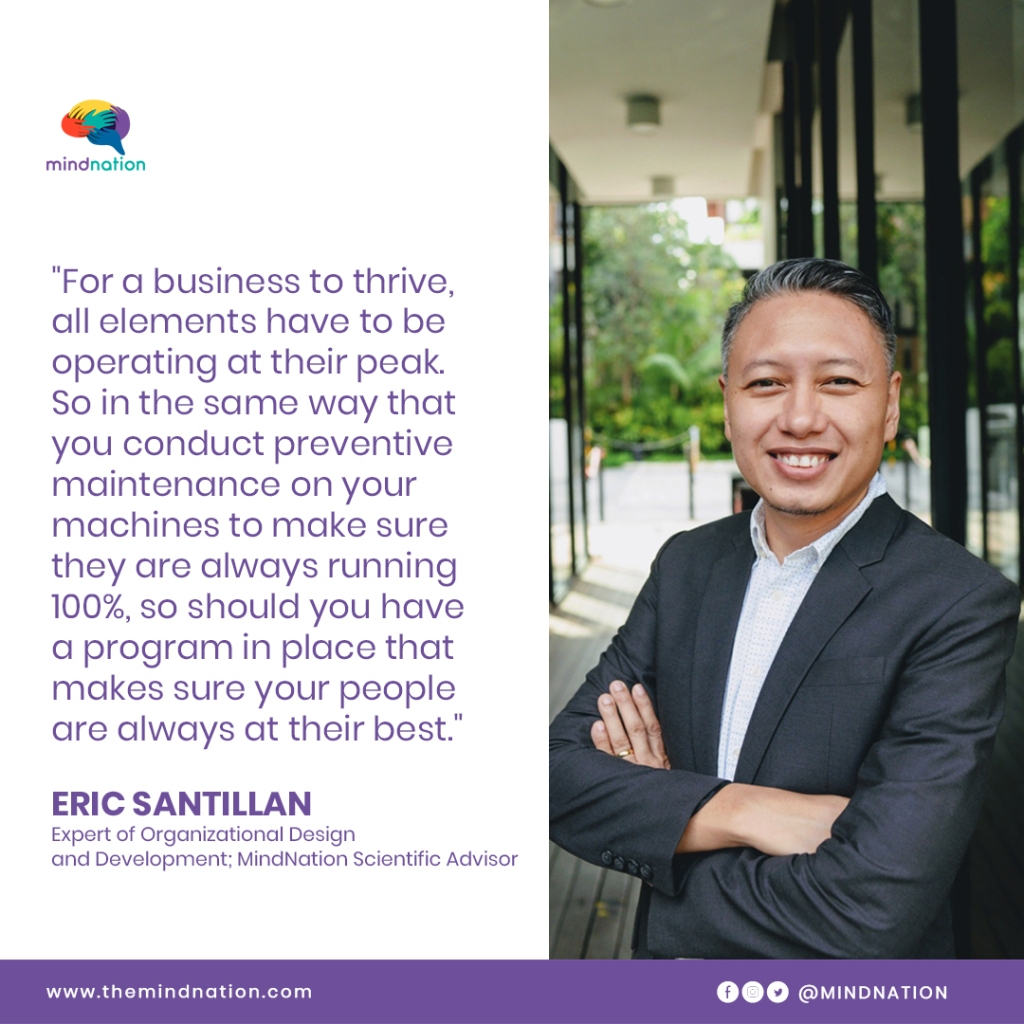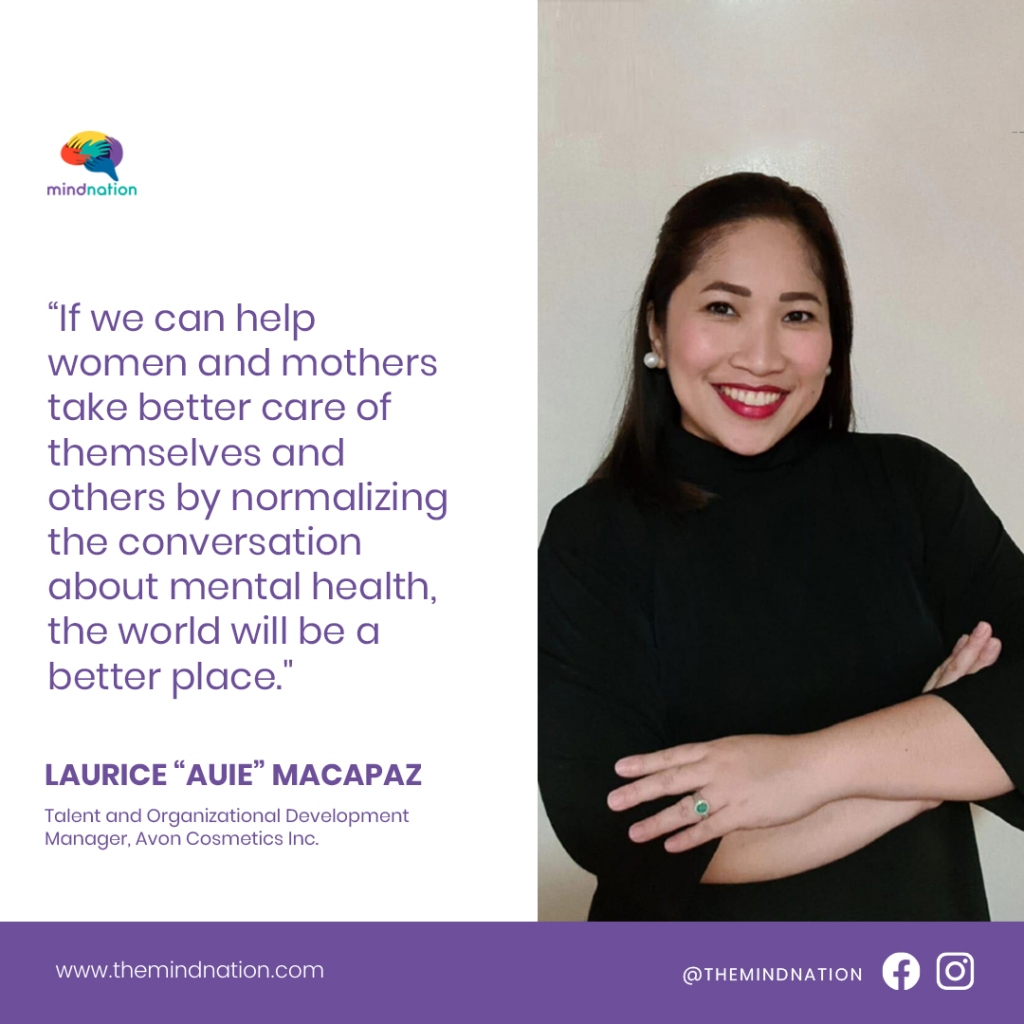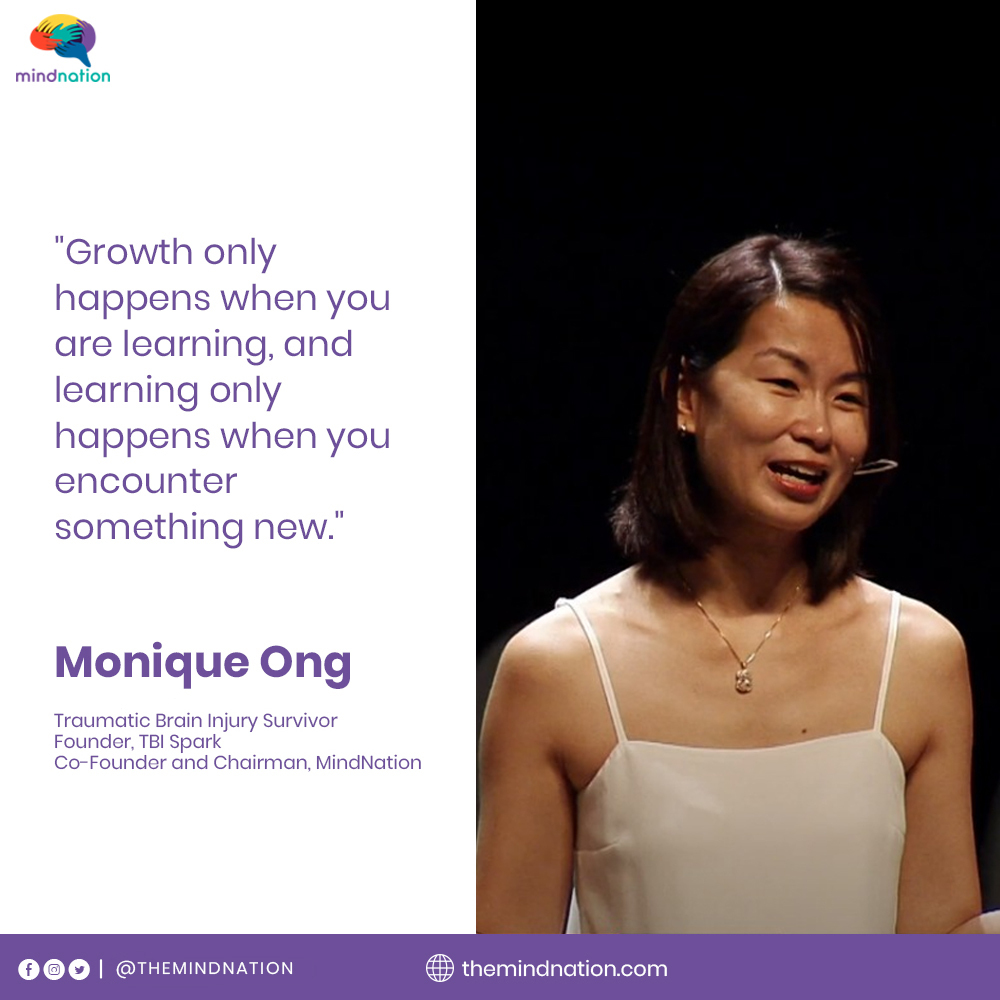In a survey of more than 6,000 Filipino employees conducted by MindNation between September 2020 to April 2021 on the state of their well-being during the COVID-19 pandemic, more than half (53%) of the respondents said they felt varying degrees of anxiety mainly due to fears of the COVID-19 virus, financial pressure, and personal matters..
“Anxiety is defined as distress or uneasiness caused by fear of danger or misfortune, as well as excessive worry,” says MindNation psychologist Jessa Mae Rojas. While a little bit of anxiety is normal and can be helpful in signaling danger — for example, it reminds you to practice social distancing policies when you are in a populated space — too much anxiety can leave you feeling weak, tired, irritable, or find it difficult to concentrate on tasks. You can even experience physical symptoms like gastrointestinal problems, insomnia, hyperventilation, and heart palpitations. All these can affect your productivity at work and relationships with loved ones.

Managing anxiety
While we cannot stop anxious thoughts from entering our minds, there are things we can do to control our reactions to them. “Always remember to keep calm,” Jessa reminds. This means:
- C — Cultivate positivity.
Negative thoughts produce more unnecessary anxiety, so always practice positive self-talk. “Instead of saying ‘I can’t do this,’ say ‘I can do this,’” Jessa suggests. “Another thing you can do is stand in front of the mirror every morning and tell yourself that you are smart, beautiful, confident, and that you can do anything.”
Additionally, try to develop a story with positive outcomes. When you reframe an experience, it turns something stressful or traumatic into a challenge that can be overcome; or, it can turn a really bad day into a mildly low point in overall wonderful life. Just be careful not to fall into the trap of toxic positivity, or the assumption that you should always be happy despite being under difficult circumstances. “All our feelings are valid, and suppressing negative ones can lead to increased anxiety, depression, and overall worsening of mental health,” Jessa points out. - A — Allocate time for worrying.
Jessa advocates the Worry Time Technique, which involves designating a specific time, place, and length of time each day solely for worrying.” Anytime you become aware of a worry during the day, write it down on a piece of paper and put it in your pocket or somewhere out of sight; since you will have time to think about that worry later, there’s no need to get anxious over it now,” Jessa instructs. Download the Worry Time Worksheet from MindED Courses here.
“At the end of the day, when your worry time comes around, settle yourself down at the worry place, pull out the paper, and reflect on your worries.” Journaling can help at this point; just write out whatever is on your mind, instead of ruminating.
“The Worry Time Technique makes worrying less intrusive in your life and allows you to manage your anxieties effectively, giving you a greater sense of control,” she adds.
- L — Label your emotions.
Giving emotions a name (i.e. “I feel angry,” or “I feel confused”) provides a deeper understanding of what happened, how it affects you, and helps you see the possibilities for what to do next. Instead of your emotions spiraling out of control, you feel less anxious and triggered.
Start by writing down the event that activated your anxiety: “I made a mistake at work.”
Then, write down what that event made you believe about yourself: “I am such a failure. I should always do a perfect job.”
Name the emotion you feel: “I’m worried I’m going to get fired.”
Finally, dispute this belief: “I usually do a good job but I am not good at everything. Everyone makes mistakes sometimes. My boss was very happy with my report last week. I will learn from this and perform better next time.’
By labelling your emotion, you are able to understand what is going on through your mind more clearly, and build a road-map to address the problem. This makes you more relaxed and confident. - M — Meditate regularly.
“Mindfulness meditation — or the type of meditation in which you focus on being intensely aware of what you’re sensing and feeling in the moment, without interpretation or judgment — is an effective strategy for managing anxiety,” Jessa shares. By training your brain to stay in the moment, whether it’s through focusing on your breath or your five senses, you let go of regrets of the past as well as anxieties about the future.
If you or a loved one is struggling with anxiety, talking to a mental health professional can helpwith streamlining the process of identifying triggers, maintaining long-term strategies through behavioral therapy, and more.
MindNation psychologists and WellBeing Coaches are available 24/7 for teletherapy sessions. Book a session now thru the MindNation app.



















